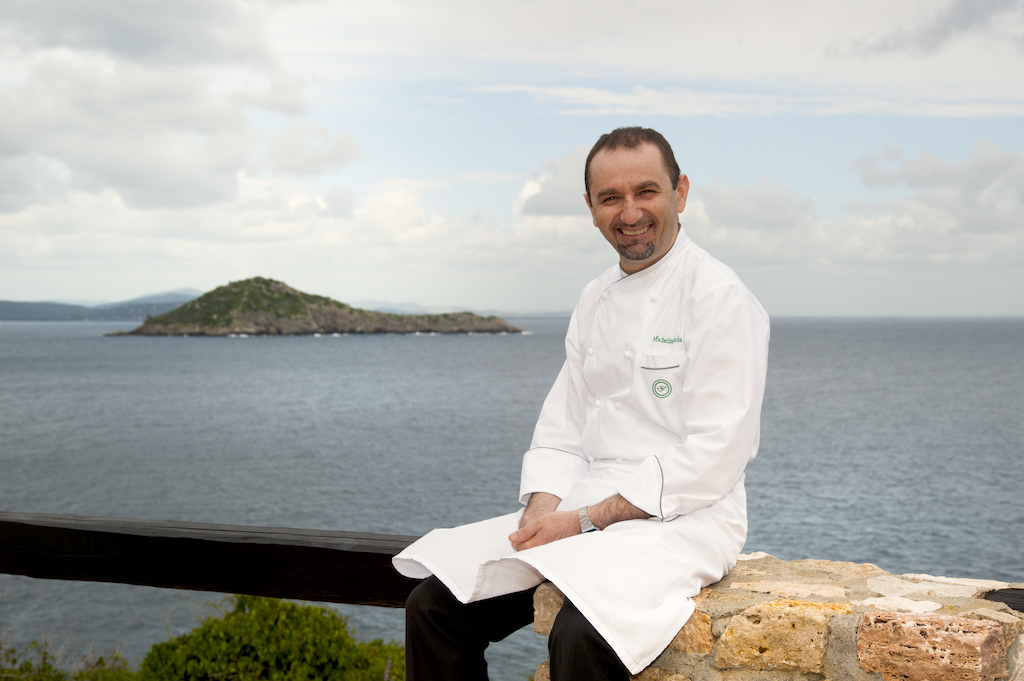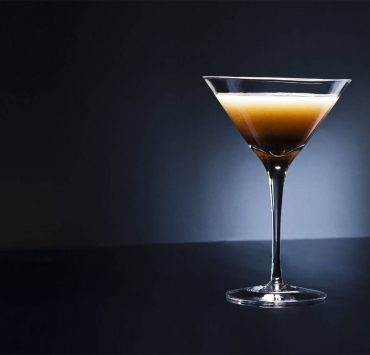On the cliff of Porto Ercole sits the fabled Hotel Il Pellicano, the luxurious hideaway of elegant villas oozing old-world charm. Stories of its famous guests are woven into its being, extravagant secrets etched into its walls and breathing into the buzz of its atmosphere. Hotel Il Pellicano is a story in itself, one of Italian speciality and passion, and alongside its inimitable design of CEO and Creative Director of Pellicano Hotels Group, Marie-Louise Sciò, its encounters are defined by the Michelin-starred culinary magic of Head Chef Michelino Gioia.
Before settling into Il Pellicano, Michelino journeyed across Italy exploring regional cuisines and developing an imaginative talent for transforming traditional dishes into marvellous contemporary creations. In 2003, he became the Executive Chef at The Cesar restaurant of La Posta Vecchia, the sister hotel of Il Pellicano, where he stayed for 13 years creating culinary novelties which earned him a Michelin star. As Head Chef of Il Pellicano since 2018, Michelino combines genius artistry and attention to local produce, with each dish crafting tales and experiences for every guest of the renowned hotel, and with each ingredient adding his own personal touch to its rich, ongoing, history.
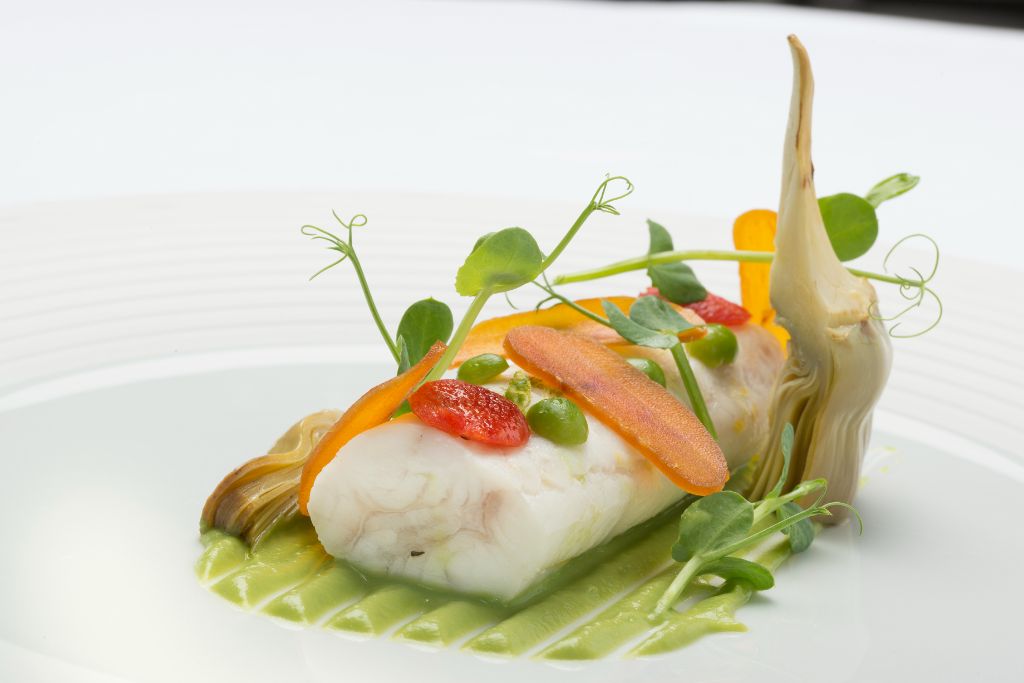
What sort of challenges comes with working in a hotel as historically and internationally renowned as Hotel Il Pellicano?
I believe that working in a wonderful place like Hotel Il Pellicano, apart from the excitement you can experience every day, involves always trying to be at the cutting edge and having the constancy to offer an excellent service for our increasingly demanding guests. But you also need to have an eye on what’s going on in the world, stay up to date on the best quality products to offer the best to our customers.
Before starting at Il Pellicano you spent 13 years at The Cesar restaurant at their sister hotel La Posta Vecchia. Did your style of cooking have to adjust at all when moving from one space to the other?
After The Cesar, I had other working experiences before returning to Hotel Il Pellicano. Moreover, I had the chance to work with other companies while I was working at The Cesar, as during winter, I was able to do internships and collaborations with the aim to increase my skills.
Regarding the inspiration of a menu, my key points are always the same, and I always follow them: tradition, territory, seasonality and comparisons with my collaborators. These four aspects are constant in my work, but above all, a good chef must be able to adapt himself to the context in which he operates. In the case of Hotel Il Pellicano, I am inspired by a more Tuscan concept, while when I was the Head Chef of The Cesar I was much more influenced by the local cuisine. The style remains the same, but the result is different.
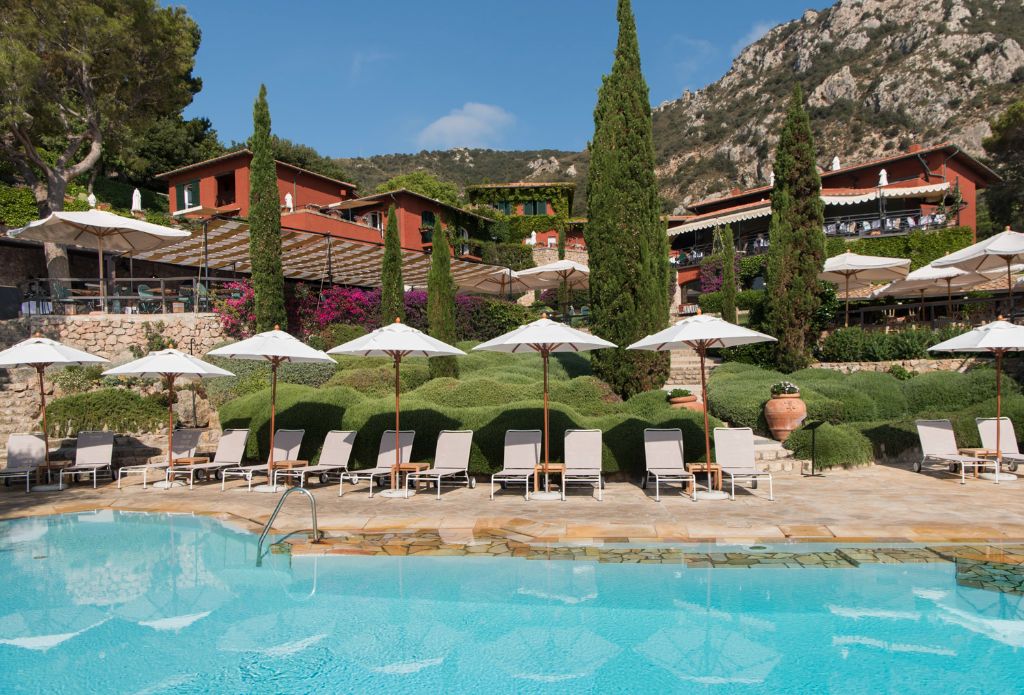
Having travelled all over the country before settling into Tuscany, what did you learn from the diversity of Italian regional cuisines?
I feel lucky because I got to know the cuisine of many Italian regions. Besides, I also had experiences abroad. Italy consists of 20 regions and each of them has its own typical cuisine, as well as provinces and small villages. This is precisely why we have a culinary background to work with that is truly the envy of the world.
From north to south, we have a wide variety of recipes and flavours: in the northern regions they use a little more butter, near the mountains herbs and game is utilized even more, whereas if you descend towards the south, we have more fish dishes.
I have had the opportunity to work around Italy and this has given me so much. I bring all these experiences into my own cooking, but I also need to respect the region I work in. We are located in Maremma, on the Argentario coast, and I have to adapt my knowledge to this territory’s ingredients.
This is not to say that we deprive ourselves of contamination with other ingredients, such as oysters or foie gras. For example, we can present an Orbetello eel with soy sauce: true local excellence but cooked in our own way.
In a country like Italy that has such a long culinary history and rich traditions, can it be difficult for a chef to be contemporary or push boundaries?
I think it is not an obstacle, but rather an opportunity. The great culture and culinary history we have in Italy can be more of a source of inspiration than anything else. We have more cues to draw from that help us make a cutting-edge dish.
After receiving a Michelin star, is there any pressure to stick to the style or menu that got you that achievement, or on the contrary, are you more confident in innovating?
I think a chef can only perform this job for passion, otherwise, it would be difficult to bear the fatigue and pressure that being a chef entails.
It is my belief that a chef should never lose his or her desire to innovate and create. However, having said that, before getting a Michelin star you are more imprudent, you have nothing to lose, whereas after achieving such important recognition, it is normal to become a little more cautious. For example, when we have to change the menu and add a new dish, we work on it for up to three weeks.
But at the same time, you must never stop creating new ideas because if I ever was to stop doing so, then it would be time to change jobs. If I lost the drive to move forward, the desire to pass on enthusiasm to my co-workers as well, there would be no point in being a chef.
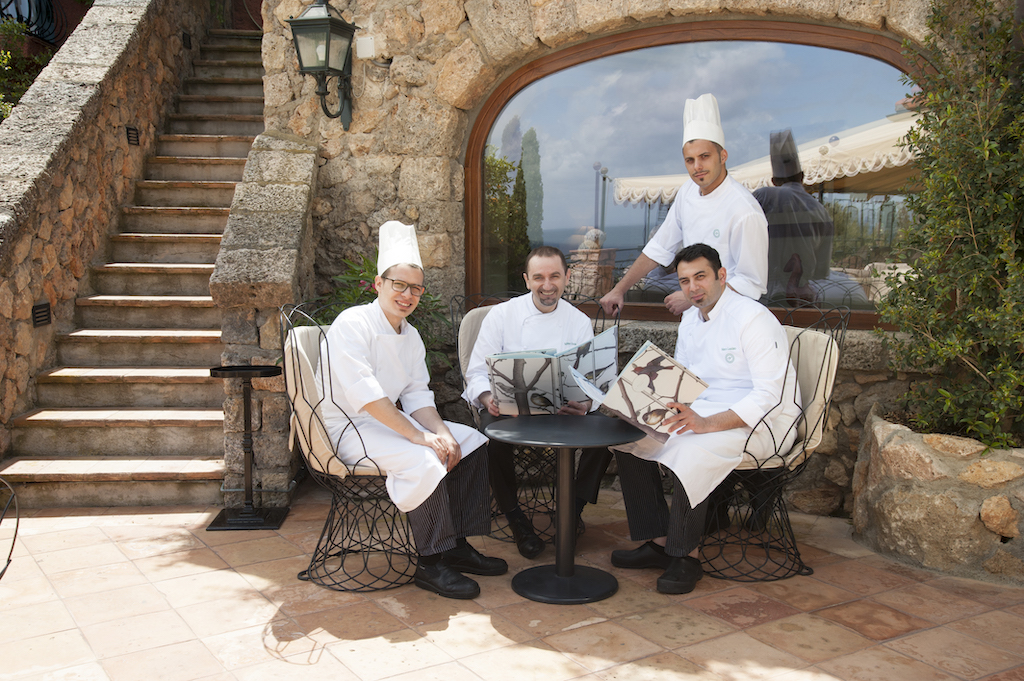
Tell us a bit about your relationship with the local producers who supply your restaurant’s ingredients. How did you come to find them and are you visiting the farms often?
For me, the relationship with the region and its people is very important. Indeed, one of the first things I did when I arrived at Hotel Il Pellicano was to establish contact with all the local suppliers, before being able to develop menus and proposals. The relationship I have created with them is beautiful.
When we have to change the menu, I just listen to them. For example, with the fish supplier, I always try to understand which fish we can use for each season, choosing from local excellences such as John Dory, turbot, or gurnards. The supplier relationships are a fundamental part of my work.
I'm unable to visit them regularly in summer, but when work at Il Pellicano slows down a bit, I try to meet each of them. Indeed, they are the ones who propose other suppliers to me, maybe the cheese producer will recommend me a meat producer, and a beautiful chain is created like this.
You’ve said you hope to create dishes guests will think about “long after they leave the table” – what’s your secret to making sure they do?
I would like to have this certainty, but unfortunately, I can't. I still try, and I believe that the right way to leave a memory is, first of all, to work well on a product and maybe ignite a memory of childhood. It often happens to me that when I eat, something reminds me even slightly of my mother – it's such a good feeling.
Two years ago, I proposed my “Risone con sconcigli e finocchio”, a typical pasta with chicken broth that my mother used to cook for me when I was a child. This memory aroused great emotion in me and so I recreated my own recipe for my customers. I must say that they liked it very much! We work a lot on these small details. Sometimes it only takes so little to create a great dish. It's all about guessing the right memory, so we keep trying.
In what ways do the guests of Il Pellicano, both past and present, inspire the dishes you invent and produce?
I have to say that I am quite a good listener, so obviously I always start with the discussions with my collaborators when creating a new recipe or a menu. We choose an ingredient and build a dish around it, plus there are many other elements like the seasonality of ingredients, the local suppliers or the region, which are all parts of the creative path.
Customers are also part of this process since they can give us suggestions to improve.
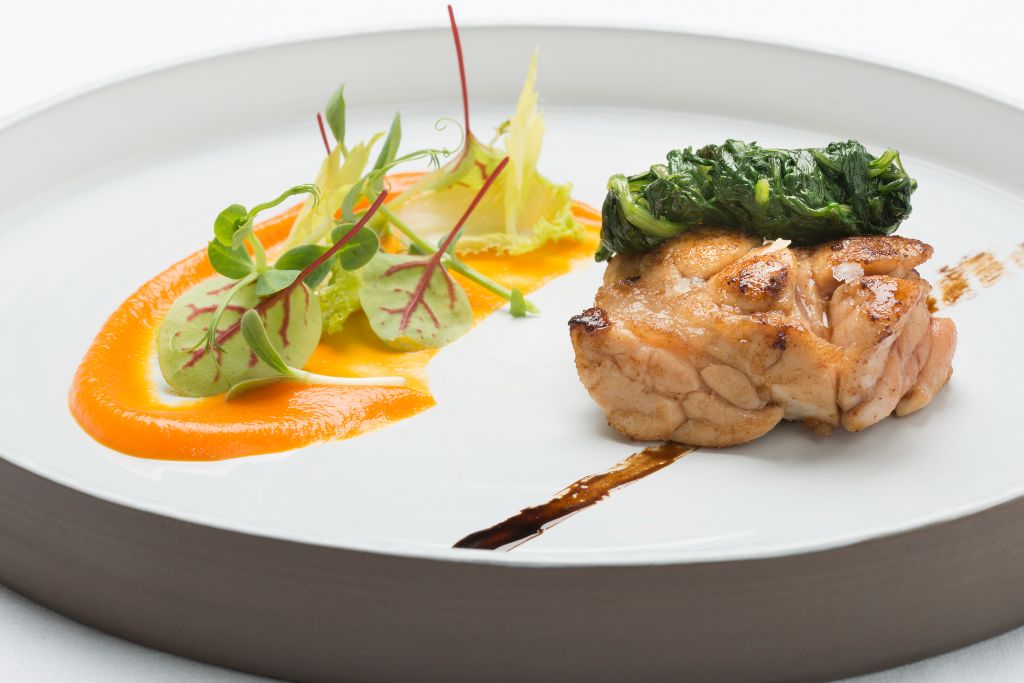
What do you find to be the most exhilarating part of the cooking process?
One of the most exciting things is touching the raw materials, which will be subsequently transformed. In the making of even just one finished dish, there is an emotion involved which in my opinion is priceless.
Seeing a dough rise, touching it with your hand, or being enveloped by the scents wafting through a kitchen is something unique. Somehow, these moments remind me of my childhood. It is a true return to the past.
What do you find to be the main difference between a stand-alone restaurant and a hotel restaurant where guests spend extended periods of time?
Of course, in a stand-alone restaurant, you can make a smaller menu, while hotel restaurants require a slightly wider offer, due to guests staying for several days.
For this specific reason, I have to guarantee a great variety, making changes every day in the small pastry and aperitifs, but above all, I have to meet the guest’s needs.
The Il Pellicano is a resort, in which guests spend 80% of their time in the F&B related outlets: we start in the morning with breakfast, we serve some snacks and sandwiches on the beach, then we have lunch or salads at the bar or at the Pelligrill, in the afternoon we serve other snacks and aperitifs, then we have dinner at Il Pellicano or at the Pelligrill and to finish off, there’s the digestive.
I believe that even for a young guy, starting out in a hotel setting like that of Il Pellicano would be a complete and extremely formative experience.
What’s your collaboration like with CEO and Creative Director Marie-Louise Sciò, who is extremely detail-oriented when it comes to the Il Pellicano brand?
You know, maybe it’s because Marie-Louise Sciò and I have known each other ever since 1998 when I joined this company, and then I went and came back, but there is a beautiful relationship between us in which she is always involved in all choices regarding the menus.
She gives us her suggestions which we always try to implement. I feel fortunate to have the support of the property owners. It gives me the freedom to express myself at my best but at the same time to improve myself because Marie-Louise is very attentive and has a different eye than those involved in operations. It’s the perfect blend, as it has been in the past with Roberto Sciò. Today, she continues in the same style.
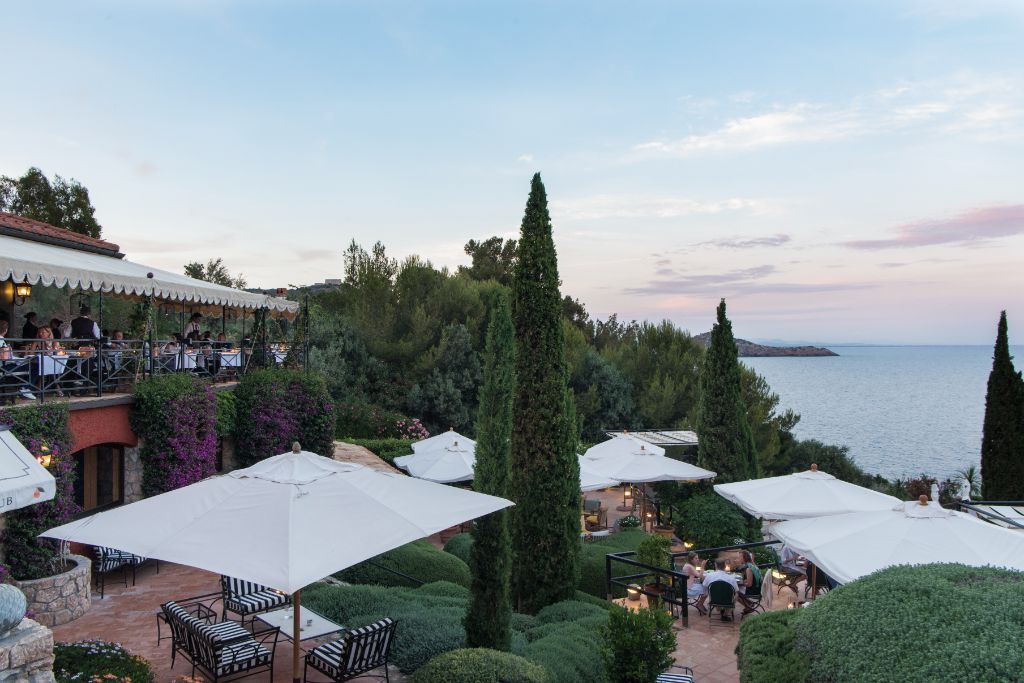
How do you integrate the blend of contemporary and old-world allure that is at the heart of Il Pellicano into your cooking?
I do it by reworking the inspiration I draw from traditional cuisine. This union can also be found in my rather linear way of serving.
When asked which dish you would be, your colleagues answered ‘spaghetti with spicy clams’, ‘Cacio e Pepe’, ‘pork & cinnamon risotto’…So, which dish do you most identify with?
I identify myself in a dish of mine that I have been making for some years now, which is “Capesante con galletta di maiale, soffice di patate, salsa alle mele verdi e vino ristretto” (Scallops with pork crackers, soft potatoes, green apple sauce and red wine). I chose it because it’s the perfect mix of taste, aesthetics and elegance.
Where can we find you during Il Pellicano’s off-season? How do you spend your time?
In periods in which we are closed, I use the time efficiently and find more suppliers, visit other companies. Before the Covid-19 pandemic, every winter I always did some internships, even though I'm 47 years old now, in order to compare myself to other chefs but also to get new ideas. Besides, a little rest is never bad.
I also enjoy visiting other restaurants when I have the time. Then in January, I go back to work and I start to plan for the following season.
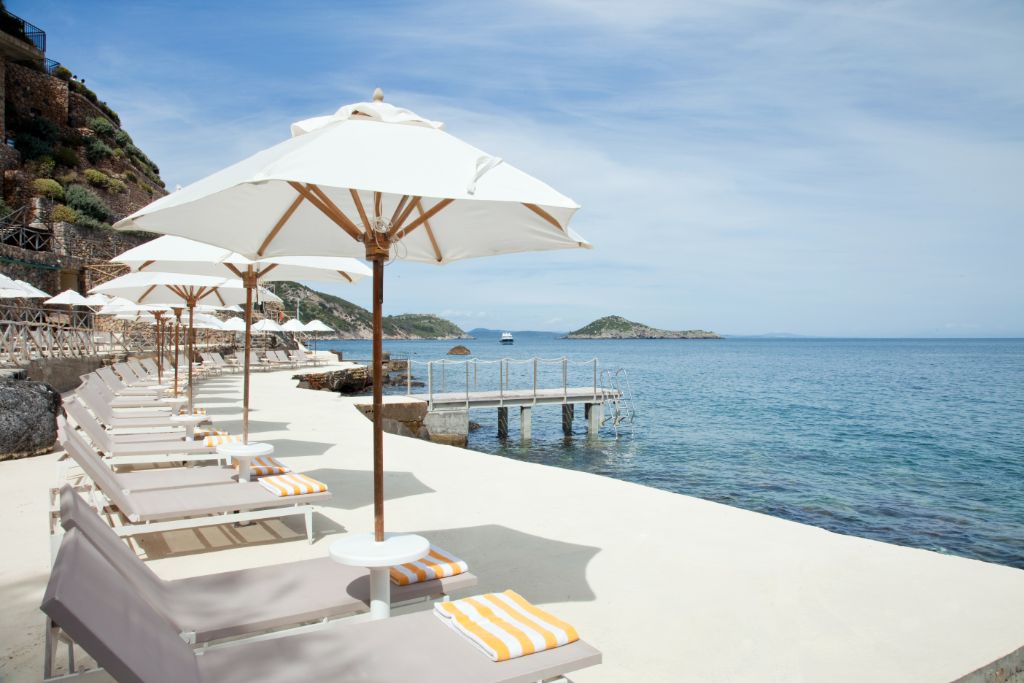
Has a Michelin-starred chef like you tried every food out there or are there some things you’re still itching to check off your bucket list?
I'd be curious to taste insects, there is a lot of talk about them, but I've never had the opportunity to try them.
Is there a dish that has particular nostalgic value or special meaning to you?
I don't know if I can tell you this… I've been doing this job for many years now, but my mother's slightly overcooked pasta al Pomodoro remains the best dish I have ever had in my life, perhaps because it reminds me of home.
There is also another typical dish from my hometown, which is a soup with cheese and eggs, meatballs, escarole and chicken broth: it’s out of this world!
How would you define your guiding principle(s)?
My guiding principles are consistency, constancy and continuity. One of my favourite mottos is: “The greatest form of teaching is to lead by example”. So, if I expect my staff to be on time for work, I have to be the first to arrive there, always at the same time.

Name your favourite city. What are the top 5 spots there you’d recommend to your best friend when he or she’s in town?
My favourite city is Rome, one of the most beautiful destinations in the world. Every corner of it leaves you amazed.
I would recommend Pierluigi e Roscioli as the best place to eat, while Piazza di Spagna and the Colosseum are among the top attractions to visit, and last but not least, the view from the Gianicolo hill is a must-do as well.
Read More:
- Exploring ‘under’: A Conversation with the Head Chef and Designer of Europe’s First Underwater Restaurant
- Sitting Down with Michelin Star Chef and Culinary Provocateur Tim Raue
Last Updated on May 27, 2024 by Editorial Team
As editor-in-chief, Raffaele infuses the magazine with a cosmopolitan flair, drawing from his experiences in London, Berlin, New York, and Barcelona. His 20-year tenure with luxury brands, coupled with a love for travel and food, enriches the magazine's content.






